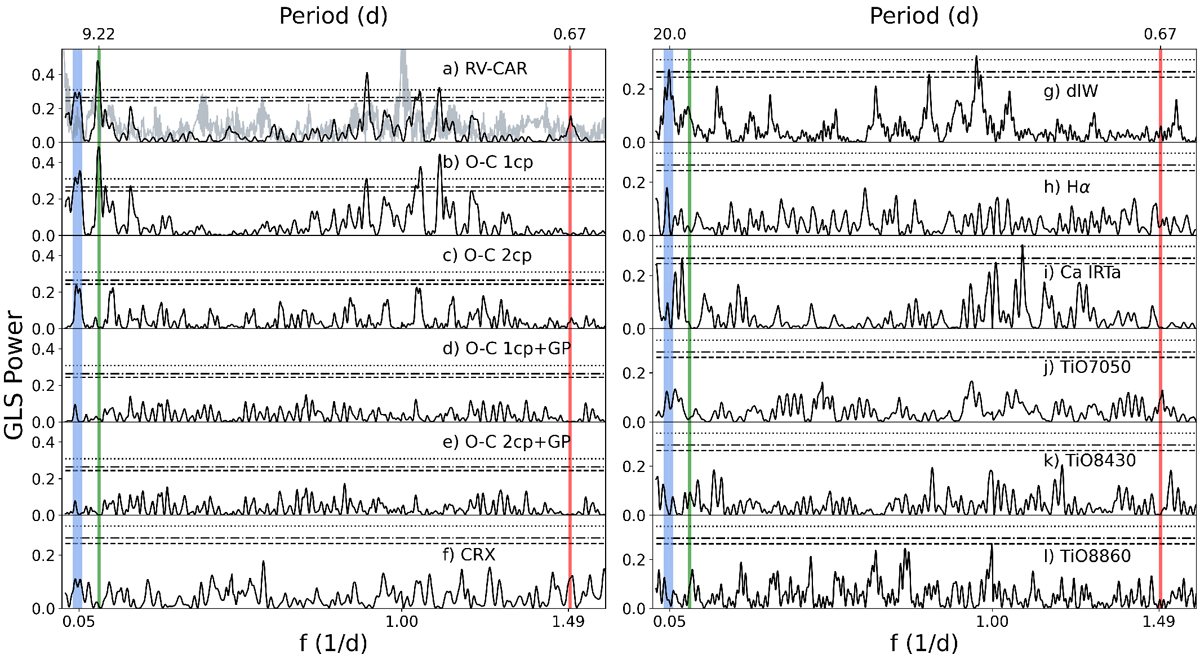Fig. 4

GLS periodograms of: (a) RVs from CARMENES VIS and the respective spectral window function (gray), (b) RV residualsafter subtracting the one-planet signal, (c) RV residualsafter subtracting the two-planet signal, (d) RV residualsafter subtracting the one-planet signal plus GP, (e) RV residualsafter subtracting the two-planet signal plus GP, (f-l) CRX, dLW, Hα, Ca IRTa (“a” corresponds to the Ca II λ8498.0 Å line), TiO7050, TiO8430, and TiO8860 activity indices from CARMENES VIS data. The “cp” in the residual models (panels a–e) corresponds to circular orbits (for a detailed explanation, see Sect. 4.3). In all panels the vertical lines indicate the periods of 0.67 d (red, USP) and ~ 9 d (green, second planet candidate). The rotational period of the star (blue line) falls in the region between ~ 19 and 26 d. The horizontal lines mark the theoretical FAP levels of 1% (dotted), 5% (dash-dotted), and 10% (dashed).
Current usage metrics show cumulative count of Article Views (full-text article views including HTML views, PDF and ePub downloads, according to the available data) and Abstracts Views on Vision4Press platform.
Data correspond to usage on the plateform after 2015. The current usage metrics is available 48-96 hours after online publication and is updated daily on week days.
Initial download of the metrics may take a while.


